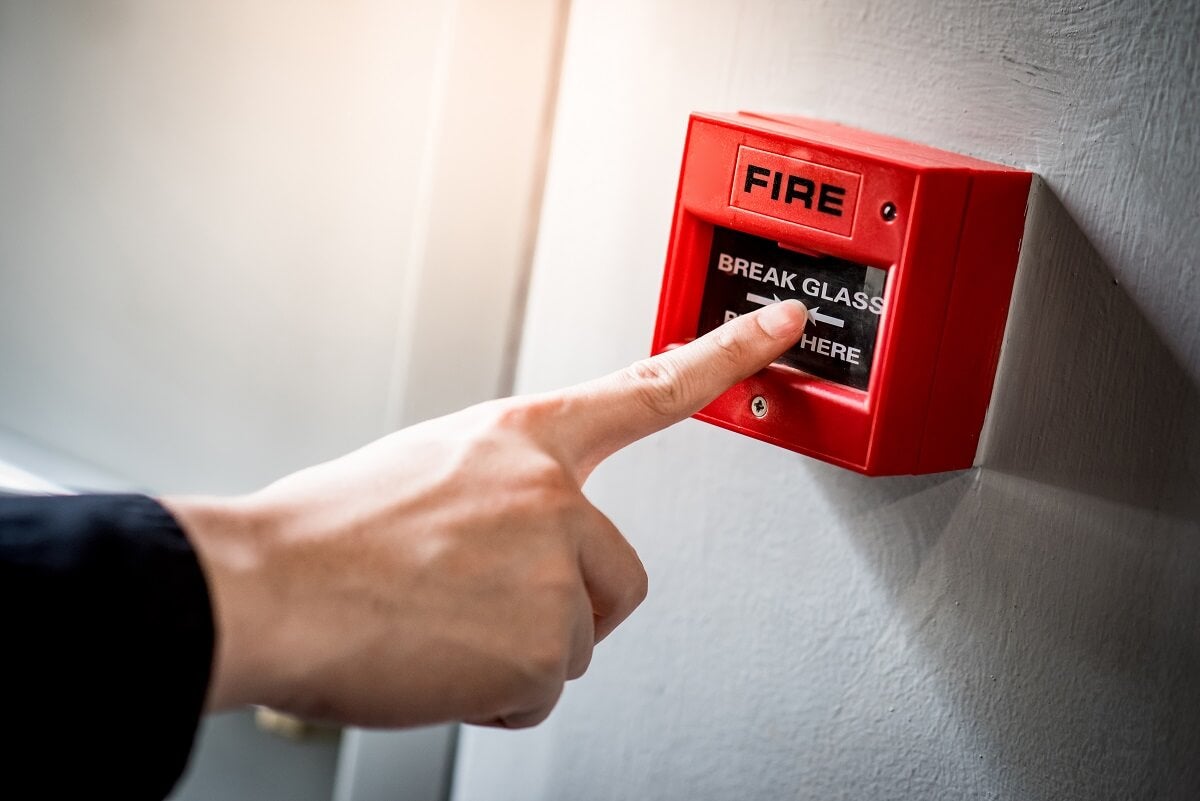Fire safety standards: How to easily comply with regulations as a business
If you’re responsible for your business or the premises it's run from, then you have a legal duty to make sure its fire safety standards are up to scratch.
But what exactly are the fire safety regulations and how do you make sure your business — and everyone within it — stick to the rules?
With the help of this handy Bionic guide, we’ll guide you through everything you need to know. From who is responsible for fire safety to the certificate requirements your business needs, we’re here to help you every step of the way.
What are the fire safety standards?
Fire safety standards are regulations that are put in place by the government to reduce the risk of fire or destruction caused by fire. The Regulatory Reform (Fire Safety) Order 2005 (to give it its official title) centres around the specific rules and guidelines for a piece of fire safety equipment, its installation and requirements in a domestic, commercial or industrial setting.
By law, you must carry out regular fire risk assessments and ensure that your business premises have the right fire safety measures and equipment in place — such as fire alarms, fire blankets and extinguishers.

What qualities do fire safety standards ensure?
Essentially, fire safety standards are put in place to make sure that a piece of fire equipment does what it needs to do. Whether it’s making sure that an extinguisher can help to reduce the spread of flames or a fire curtain can drop down and seal off an area, everything has to be rigorously tested to ensure it performs to the required standard.
Do you have to meet fire safety standards?
If your business manufactures, sells or installs fire safety equipment, then you must meet fire safety standards. If you fail to do so, you could be fined thousands of pounds or sent to prison depending on the severity of the case.
Similarly, if you’re a business owner purchasing fire safety equipment or having it installed on your premises, you must ask for the fire safety certification from the supplier.
Is a fire safety certificate a legal requirement?
No, it’s no longer a legal requirement to have a Fire Safety Certificate. In the past, the Fire Authority would issue a Fire Safety Certificate to businesses that met the required fire safety standards in the UK. However, this certificate no longer exists.
Instead, all businesses must now undergo a Fire Risk Assessment — which puts the responsibility on you as the business owner.
What is a Fire Risk Assessment?
A Fire Risk Assessment consists of a complete evaluation of the business premises and any hazards. It’ll vary from building to building, but it’ll typically look at things like: occupancy profiles, building layouts, fuel, combustible materials and more.
A Fire Risk Assessment will follow these key steps:
1. Identify the fire risk
The first step of the Fire Risk Assessment is to identify the hazards within your business. You’ll typically do this by walking around the premises and recognising:
- Sources of ignition — These are items that could start a fire. This can be anything from heaters, electrical equipment, naked flames and lightning as well as items that can cause sparks or get very hot.
- Sources of fuel — These are things that can burn easily. You’ll be looking out for items like paper, plastic, wood, rubbish, foam and rubber. But, make sure to look into any furniture and check if it's flammable.
- Sources of oxygen — Mainly air but check for any oxygen tanks or things of this nature.
2. Identify people at risk
When a fire breaks out, everyone is at risk. You’ll need to make sure that you’ve considered everyone who’ll be on-site including employees, contractors, visitors and the public.
But, there are always people who will be at a higher risk and who’ll need assistance escaping, regardless of whether they’re an employee or the public. These can be the elderly, the disabled, pregnant women or someone who is unfamiliar with the premises.
3. Evaluate the risks
Once you’ve considered the fire risks and those who are at risk, you’ll need to look at the practical measures you can take to prevent a fire from happening.
Reduce the risk of fire — You’ll need to start by considering the hazards that you identified in step 1 and remove any of those hazards if possible. If it’s not possible to remove them completely, then you’ll need to reduce the risk as low as possible.
In the event of a fire — You need to consider how you’ll keep people safe in the event of a fire. You’ll need to ask yourself:
- How will a fire be detected? — Consider any areas in which a fire could start and develop without anyone noticing.
- How will you ensure everyone is alerted to the fire who is on the premises? — Consider where and what people will be doing. Make sure there are no secluded areas where people either won’t hear or could get stuck.
- Would you be able to extinguish a small fire to prevent it from developing into a larger fire? — Make sure all staff know how to properly use an extinguisher and are confident in using it.
- Will people be able to find the fire exits? — Make sure that you have appropriate signage and emergency escape lighting in place. In some cases, a fire can plunge businesses into darkness, so make sure you’re prepared and have access to a backup solution.
- Are your escape routes usable and lead to total safety? — You must make sure that escape routes are not blocked or locked as they need to be easily available in the event of an emergency. They should not lead people to enclosed spaces where there is no further escape.
- Would people have to go past a fire to reach a final exit? — Make sure that you’ve considered all parts of your premises, especially those where there is only one escape route. This could be from a room, a floor, a corridor or a staircase, so make sure there are protective routes that include fire doors and barriers.
Ideally, if there should be a fire, you want to make sure that people are able to see it — or be alerted to it — turn their backs on the fire and reach a place of total safety.
4. Record, plan and train
Should a fire break out, it’s crucial that you and your staff know who is responsible for what and how to react in the event of a fire. To do this, you need to record, plan and train.
Recording your risk assessment
You’ll need to record the significant findings and actions that you’ve taken to remove and reduce any fire risks. If you employ five or more people — or you own licensed premises for anything including alcohol, gambling, or theatre — then you must record any significant findings.
But, what counts as a significant finding?
- Any fire hazards you have identified — But this does not need to include trivial things like a small tin of oil-based paint.
- The preventive measures — Record any action you have taken or will take to remove or reduce the risk of a fire occurring.
- People who are at risk — Particularly those who are at greater risk like lone workers, night shift workers or people with restricted or reduced mobility.
- The actions you’ll take — Record the actions you’ll take or have taken to reduce the risk to people from the spread of smoke and fire. This can include things like fire doors.
- The actions people need to take — Include all details of any person who is nominated to carry out a particular action or function. This will also make up your emergency plan.
- Information, instruction and training — You’ll need to identify the information, instruction and training you will give to your staff and how it will be given.
Any actions or measures that you have identified need to be put in place as soon as possible — fire isn’t something that can be delayed.
5. Create an emergency plan
Your emergency plan should detail what your employees need to do in the event of a fire on your premises and it should be based on the findings from your risk assessment.
Make sure that your plan doesn’t rely on any help or intervention from the fire service but does include procedures for the safe evacuation of people who may need assistance. You’ll also need to make sure that you identify fire wardens within your plan.
See how your employees can be properly trained in the event of an emergency with our Business Health & Safety guide.
6. Inform and train
Providing training for your staff on how to prevent fires, and what they should do if a fire occurs, can be beneficial for both your employees and your business in the long run.
Make sure that you inform all employees – including those who work outside of normal business hours as well as temporary or agency staff — of all safety features that are installed or will be installed on the premises.
Any training that you give on the premises must be given in a way that can be clearly understood by all members of staff.
7. Review your risk assessment
Once your fire risk assessment is complete, store it in a safe place. You’ll need to regularly review this as, over time, new risks will be identified and the assessment — and possibly the emergency plan — should be updated accordingly.
It’s also a good idea to review any records of fires or near-misses so you’re able to learn and adapt from them.
You can find a free, fire safety risk assessment template on the GOV.uk site.
How often do I need to do a fire risk assessment?
Ideally, it’s recommended that you carry out a fire risk assessment at least once a year. Make sure that your risk assessment is shared with any new starters who join your business as soon as possible.
What are the fire alarm regulations?
By law, all fire alarms in the UK must be ‘adequately maintained’ at all times. As the owner of the business, you’ll need to test your fire alarms weekly to ensure that everything is in working order. This also helps to familiarise building users with the sound of the fire alarm.
When testing your alarms, make a note of the date and time and take appropriate action immediately if there appears to be a fault.
Protect your business with quality business insurance
As an employer, putting the right fire safety standards in place to safeguard against potential fires should be a top priority. Having a proper emergency plan in place means that you’re not only protecting your workforce but your company too.
Speak to the Bionic team today to find out more about Business Insurance or check out our handy guides to help you with all of your business needs.







